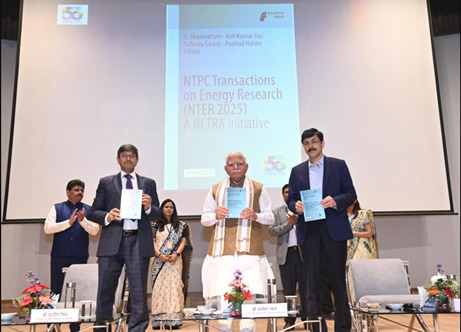India’s first 3 MWh vanadium flow battery represents a breakthrough in long‑duration energy storage (LDES), enabling deeper renewable integration and greater grid stability.
Manohar Lal, Minister of Power and Housing & Urban Affairs, on Tuesday inaugurated India’s first megawatt-hour scale vanadium redox flow battery (VRFB) system at NTPC’s R&D centre, NETRA, in Greater Noida. With a capacity of 3 MWh, the installation marks a significant milestone in India’s push for long-duration energy storage (LDES) solutions to support renewable energy integration and grid stability.
The inauguration took place during the Minister’s visit to NETRA, the research and technology arm of NTPC Ltd, India’s largest power generation company. He was accompanied by senior officials, including Pankaj Agarwal, Secretary, Ministry of Power, and Piyush Singh, Additional Secretary. Gurdeep Singh, Chairman and Managing Director of NTPC, welcomed the delegation along with other senior NTPC officials.
The Vanadium Redox Flow Battery represents a promising alternative to conventional lithium-ion systems, offering scalable, long-duration storage with enhanced safety and lifecycle performance. Its deployment expands the range of elements that can be used in battery manufacturing, contributing to material diversification and supply chain resilience.
Commending the NETRA team, Manohar Lal said the system reflects India’s growing capabilities in energy innovation and its commitment to sustainable development. He emphasised that such indigenous advancements are critical to achieving energy security and accelerating the energy transition.
During the visit, Manohar Lal was also briefed on NTPC’s pioneering R&D initiatives in carbon capture, green hydrogen, energy storage, and waste-to-energy technologies. He toured several demonstration facilities, including a green hydrogen mobility pilot, a sewage treatment plant (STP)–based green hydrogen unit, a solid oxide high-temperature steam electrolyser, and an enhanced steam gasification plant based on municipal solid waste-refuse derived fuel (MSW-RDF).
The tour also included NTPC’s AC microgrid (4 MWp solar and 1 MWh Li-NMC battery energy storage system) and NABL-accredited laboratories.


